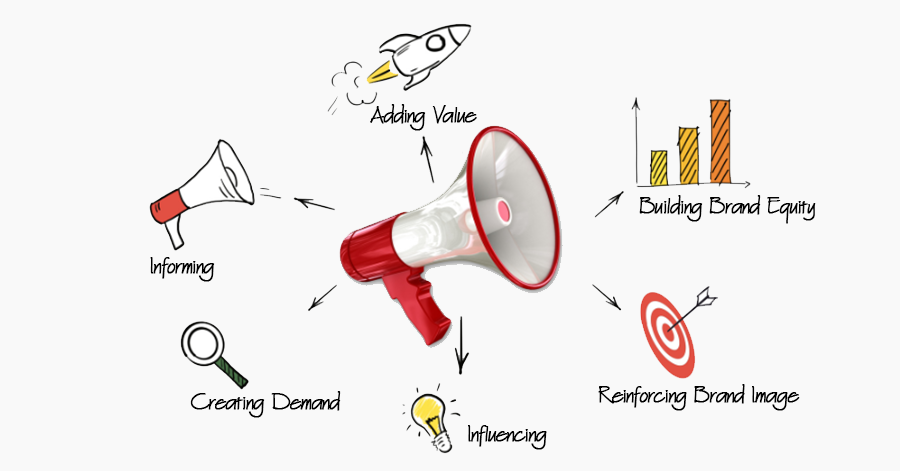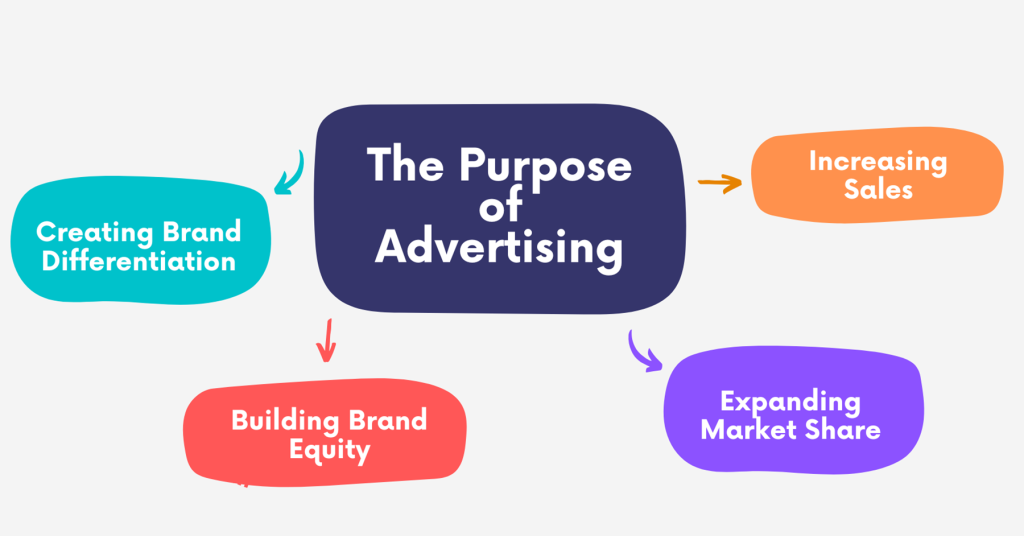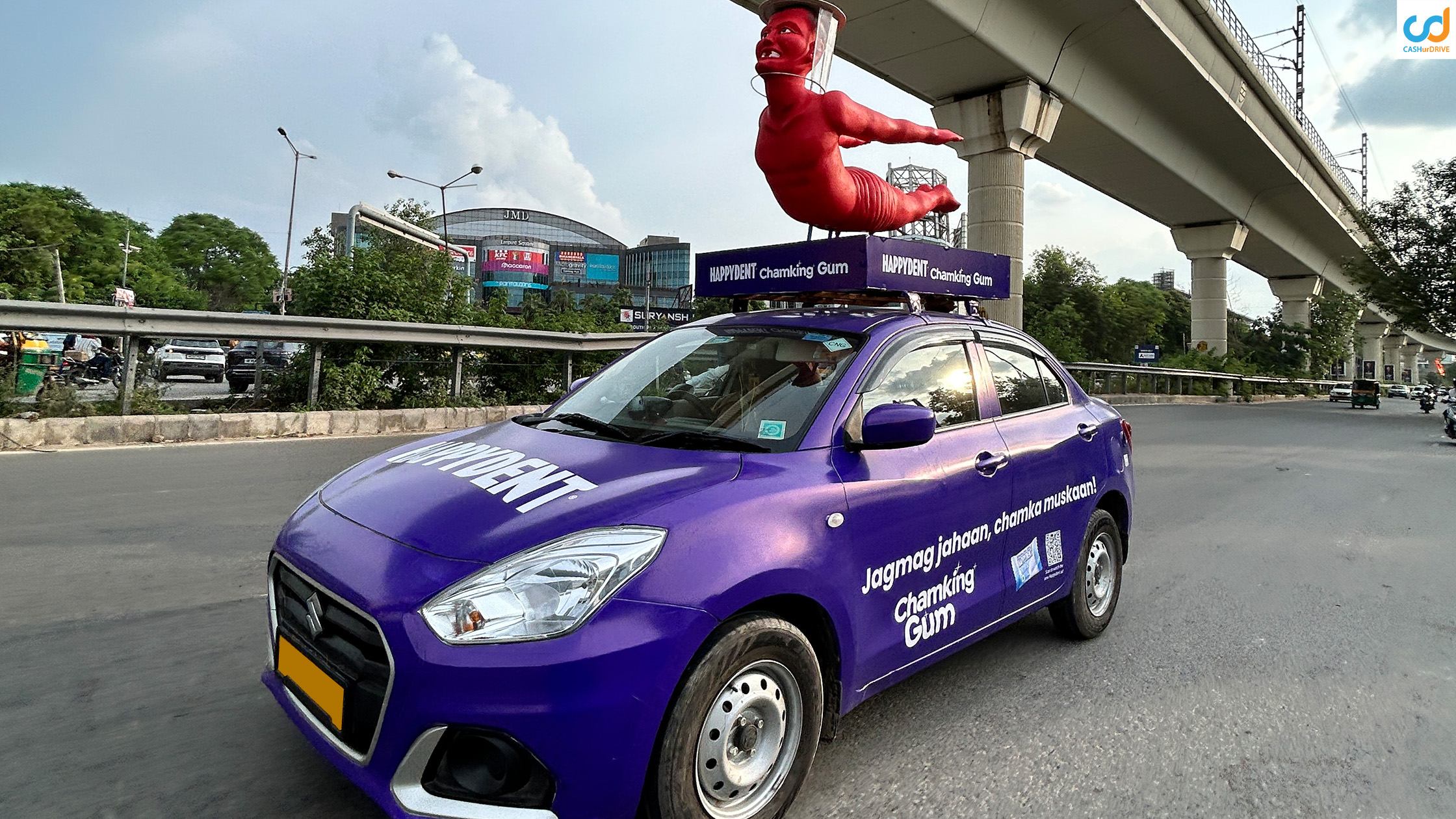
Inside the World of Advertising: Key Sectors and Strategies
Introduction
In a world where brands constantly strive to capture attention, the advertising industry plays a pivotal role in shaping perceptions, influencing choices, and driving consumer behaviour. From the days of print media and billboards to today’s Digital advertising strategies, advertising has come a long way, evolving with technology and changing societal preferences. It has become an ever-evolving field that can influence consumer behaviour and drive economic activities.
The wide sector of the advertising industry highlights its versatility and adaptability to different needs and objectives. But even after so many evolving technologies, the function of the advertising industry remains integral to business success. As a result, it continues to be an essential component of our recent world.
This brief introduction walks you through the advertising world and the scope of advertising management, breaking down its many forms, emphasising the value of creativity, and highlighting the data-driven tactics that drive contemporary campaigns. So, let’s discuss the fundamentals of this ever-changing subject. Regardless of whether you are a business owner, an aspiring marketer, or just interested in how advertisements operate, this advertising industry guide is a must-read for everyone.
What is Advertising?
Advertising is a strategic communication process that aims to promote a product or service to a target audience. Basically, it serves as a bridge between consumers and businesses to convey information, foster brand loyalty or simply create awareness. In contrast to simple announcements, advertising requires the use of creativity, psychology, and influence. To efficiently spread its message, it uses a variety of media, including print, radio, television, digital platforms, and, more recently, social media.
Advertising is all about engaging the audience, creating a story, and making an emotional connection—it’s not simply about showcasing a product. It is a powerful instrument for influencing customer preferences since it speaks to human senses, ambitions, and aspirations.
Scope of Advertising

When we talk about the scope of advertising management you have to understand that it is a vast and continuously evolving landscape. A landscape of business and technology that extends beyond industries, from health, and consumer goods to entertainment and social causes, it reaches every sector. It’s the advertising that plays a crucial role in launching new products, uplifting the brand presence for existing products and even repositioning companies in the market. Advertising is not limited to tangible products but to political campaigns, PSAs and more.
Advertising has transcended national borders in a globalized society linked by digital platforms. Businesses may now precisely target particular demographics or even a global market, so it’s no longer limited to a local audience. Programmatic advertising and data analytics have completely changed how marketers find and connect with their target audience, increasing the efficiency and focus of advertising.
The Different Functions of Advertising

Just as vast its scope is, the functions of advertising are also countless. Advertising not only broadcasts information about the new products, features and pricing but also keeps consumers up-to-date about the latest offerings. In fact, advertising acts as a form of media that helps consumers educate about the benefits, uses or potential drawbacks of a particular product and services. Let’s explore the different functions of advertising in detail.
Informing
One of the primary functions of advertising is to inform the target audience about products and services. It aims to provide relevant and accurate information to consumers and helps them understand the various features, benefits and value of the product that is being advertised. Informative advertising often focuses on new product launches, pricing, availability, product updates and other essential information that consumers might need before making a purchase.
Influencing
Another important function of advertising is influencing consumer behaviours for decision-making. You might not know that advertising plays a key role in shaping consumer perceptions or behaviour regarding a particular product or service. This basically happens through persuasive messaging, engaging visuals and different advertising appeals. By presenting products or services in a desirable way, advertisements help consumers to consider them as viable options.
Adding Value
By highlighting their special qualities, advantages, and competitive advantages, advertising raises the value of goods and services offered by a particular brand. This is important especially when there are a plethora of brands in the same segment competing to gain customers. Advertising helps consumers see products as more appealing, valuable, and able to meet their requirements or wants by highlighting their value proposition.
Building Brand Equity
Another important function of advertising is the way it helps in building brand equity. From helping shape consumer perceptions to associations and preferences it does it all. In addition to that, it also helps build an emotional connection between the consumers and the band.
Reinforcing Brand Image
Ever changed your perception of a brand after seeing a particular advertisement? If yes then you will understand how reinforcing brand image is an important function of advertising. It helps in creating a positive and desirable image of a brand in the minds of consumers. By consistently communicating the brand’s values and USPs, advertising helps build a differentiated and positive brand image.
Creating Demand
Creating demand for goods or services is one of the main purposes or scope of advertising. It generates a sense of urgency and motivates consumers to act by arousing their curiosity, desire, and purchase intent. Consumer excitement, interest, and curiosity are sparked by successful advertising efforts, which boost sales and profits.
Also Read: Top 10 Advertising Strategies You Can’t Miss This Festive Season
The Purpose of Advertising

The purpose of advertising is quite multi-faceted. It depends on the specific goals and objectives of a business. So, some common and everyday purposes of advertising include the following:
Increasing Sales
One of the primary purposes of advertising is to drive sales and revenue growth. This happens when advertising helps in attracting new customers and encourages repeat purchases. By creating awareness, interest and desire among customers, advertising helps brands achieve their sales target and gain desirable profits.
Expanding Market Share:
By expanding their market share, advertising gives companies a competitive edge. Advertising aids in market penetration and expansion by expanding the brand’s reach and establishing it as the go-to option. It enables companies to surpass rivals and gain a bigger market share.
Building Brand Equity:
Businesses can increase their market share through advertising, giving them a competitive edge. Advertising helps brands gain market share and expand by expanding their reach and establishing themselves as the go-to option. Businesses can outperform rivals and gain a bigger market share thanks to it.
Creating Brand Differentiation:
Advertising plays an important role in differentiating brands from their competitors. We know how crowded the current marketplace is no matter how unique your products or services are. By showcasing the uniqueness of a product or service, advertising communicates the distinctiveness of a brand.
The Benefits Of Advertising
Advertising is one of the most critical tools for every organization. And why wouldn’t it be, after all, it is one sole thing that helps make the relationship between the buyer and seller more amicable. Advertising helps contribute significantly to a country’s GDP and also helps fuel competition. As a result, it helps encourage businesses to innovate and enhance their products and services to stay in demand in this competitive market.
In addition to that, you might not know but advertising fosters employment as well. From graphic designers, media planners, and copywriters to market researchers, there are plenty of people who work together in order to make this medium work. This creates a ripple effect throughout the country’s economy.
When we talk about the benefits of advertising from the business perspective, it offers remarkable returns. Yes, advertising offers great ROI results if executed in the right way. Advertising also helps build brand awareness and equity and fosters customer loyalty. This helps businesses to common premium prices for their products and services.
For consumers, one of the key benefits of advertising is the product discovery. It’s the advertising that introduces customers to new and innovative products that they might not have seen otherwise. Moreover, it also helps them with the price comparisons as well. That’s because advertising includes information about pricing that enables customers to make a comparison between different brands and retailers easily.
The benefits of advertising are extended and are equally important for both consumers and business organizations. Advertising is still a vital component of today’s environment, whether a company is looking to grow its market or a consumer is looking for the best products.
Classification of The Advertising Industry
The advertising industry is primarily divided into two categories. One is consumer advertising and the other one is business to business also known as B2B advertising. Let’s discuss each of these in detail.
Consumer Advertising:
As the name implies, consumer advertising straightway targets individual customers. It primarily focuses on influencing the purchasing decisions of consumers. We can notice consumer advertising around us in our daily lives from commercials on the TV to pop-up ads on our smartphones, all these are counted as consumer advertising.
Business-to-Business Advertising:
This type of advertising focuses on promoting products or services to other businesses. B2B advertising fulfills a completely different set of priorities like efficiency, long-term partnerships and most importantly cost-effectiveness.
Advertising can be further categorized among these groups according to its media, geographic reach, and goal. It can take several forms, each with unique goals and tactics, including reminder, informative, persuasive, service, and product promotion.
Most Common Sectors in the Advertising Industry
As we mentioned earlier also, the advertising industry incorporates a plethora of sectors and each sector caters to specific needs and preferences. There are a few sectors that are quite prominent like retail advertising, political advertising and OOH advertising too. Recently, healthcare advertising has also gained immense popularity which is helping medical institutions raise awareness about health issues and promote medical services.
Retail Advertising
This is one of the most prominent sectors of the advertising industry. It focuses on promoting products that are available in retail stores, online marketplaces and supermarkets as well. The main aim of retail advertising is to attract consumers to purchase goods and services directly from the shelves or the e-commerce market.
Healthcare Advertising
This is another advertising sector that is gaining momentum when it comes to advertising trends in 2024. From hospitals, and medical institutions to hospitals and clinics now use advertising to raise awareness about health issues and promote medical services. Additionally, healthcare advertising also helps in informing the public about the available remedies and treatments.
Political Advertising
You may have seen during elections there’s a rise in political advertisements everywhere. Many political parties, candidates and supporting groups use advertising to convey their agendas, influence public opinion and gather support during elections. It is also helpful in sharing the political party’s manifesto and policy campaigns the party will work on during its tenure.
Entertainment Industry
When we talk about the entertainment advertising industry, it is a completely different world. This sector consists of advertising specifically planned for promoting movies, TV shows, music albums, live performances and other forms of entertainment. The main aim of this advertising sector is to build anticipation and generate buzz around entertainment events.
The Digital Advertising Advantage
Digital advertising has truly transformed the way businesses used to promote their products and services. Today, with the digital advertising advantage, businesses leave a thoughtful and long-lasting impact on consumer behaviour, marketing strategies and more. Digital advertising strategies provide a unique advantage by combining precision targeting, real-time analytics, and the ability to scale, offering brands the chance to connect deeply with consumers. Let’s explore how these advantages redefine marketing.
Precision Targeting
One of the biggest ways digital advertising impacts our world is through precision targeting. It allows businesses to reach a specific target audience based on their behaviour, interests and demographics. So, this implies that you see ads which are more relevant to your interests, making your experience more tailored and enjoyable.
Real-Time Analytics
The number of individuals who viewed, clicked on, and even made a purchase is an instant indicator of how effectively an advertisement is functioning. This enables companies to swiftly modify their tactics for improved outcomes.
Affordable For Every Business Model
Because Digital Branding Services tend to be less expensive than traditional types of promotion like TV or billboards, small firms can now compete with larger ones. This promotes entrepreneurship and levels the playing field.
Data-Driven Personalization
By using the data collected from user behaviours and preferences, digital advertisements can be personalized for every individual. This personalisation will help in creating more impactful customer relationships and will also improve conversion rates.
Enhanced Engagement
Through formats like video ads, interactive banners, and personalized messaging, digital advertising facilitates direct interaction with consumers. This active engagement strengthens brand loyalty and keeps the brand top-of-mind.
Global Reach
With the digital revolution, now companies or businesses can reach people all around the world. This means with digital advertising there’s no geographical barrier. With digital advertising, you can discover products or services from other countries that you would not have known about otherwise.
Final Words!
In conclusion, we can say that advertising is a combination of creativity and strategy that influences the choices of consumers for specific products and services available worldwide. The real scope of advertising is beyond the promotion of products, it is more like a narrative that aligns with audiences, shapes their perceptions and ultimately helps drive economic growth.
Looking to make your mark in advertising? At CASHurDRIVE, a leading Outdoor Advertising Company we know what it takes to thrive in the ever-evolving world of advertising. Partner with us for strategies that cut through the noise and drive real impact.



